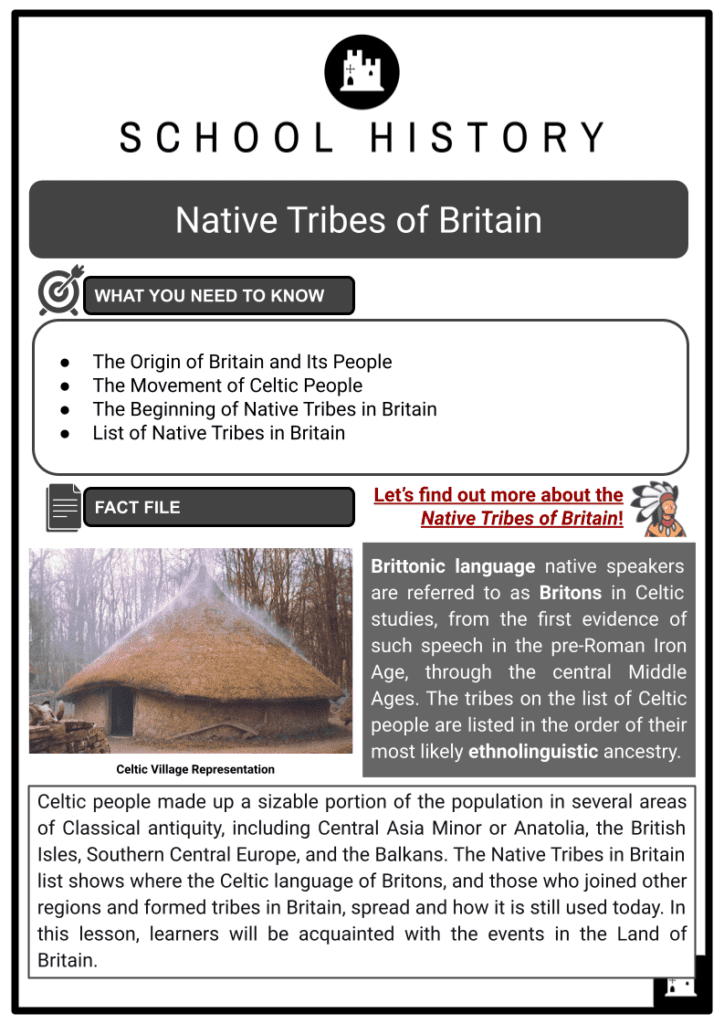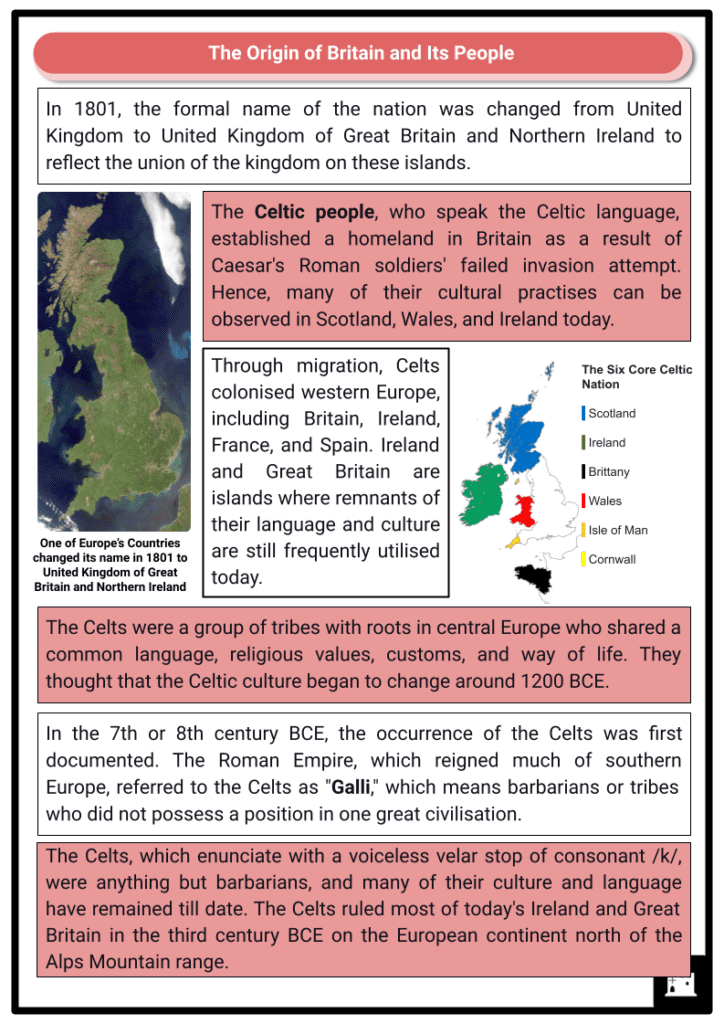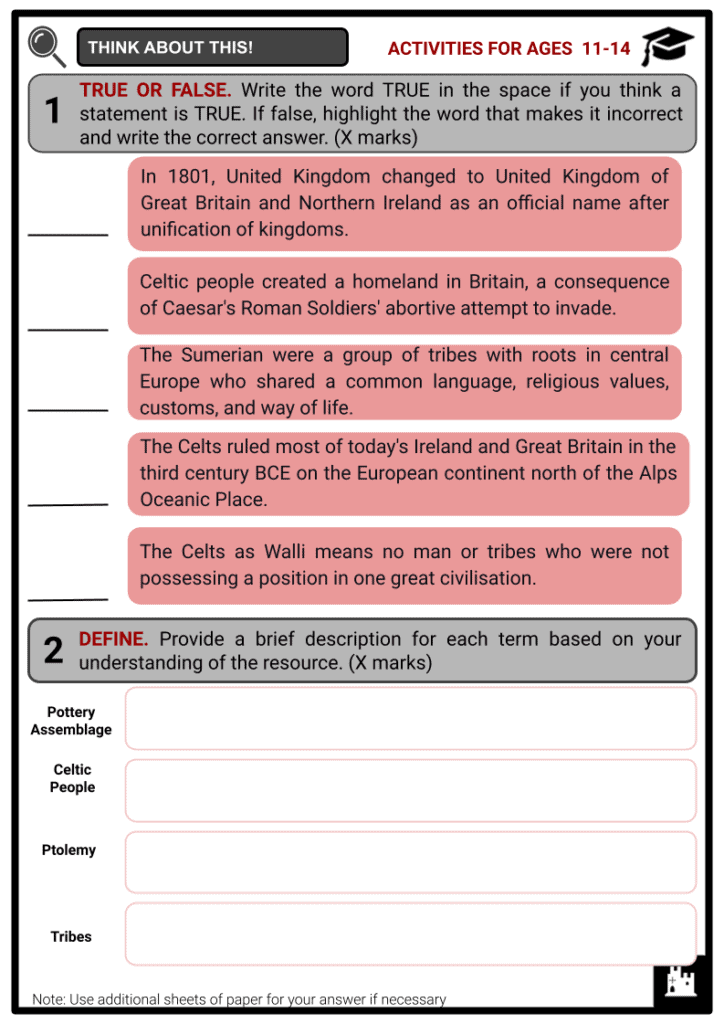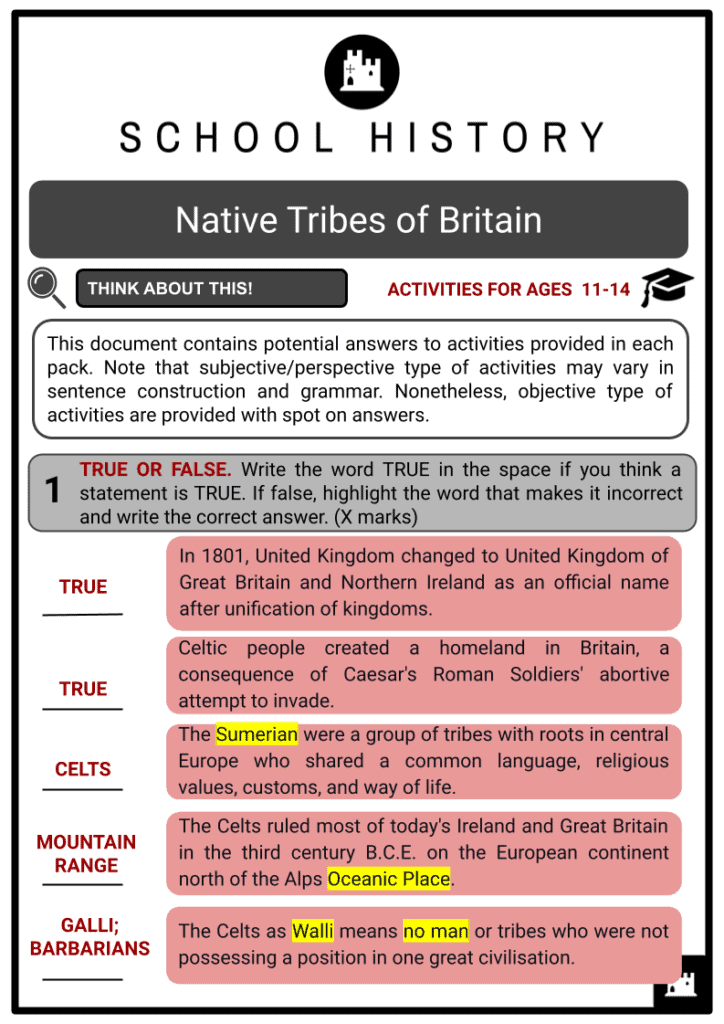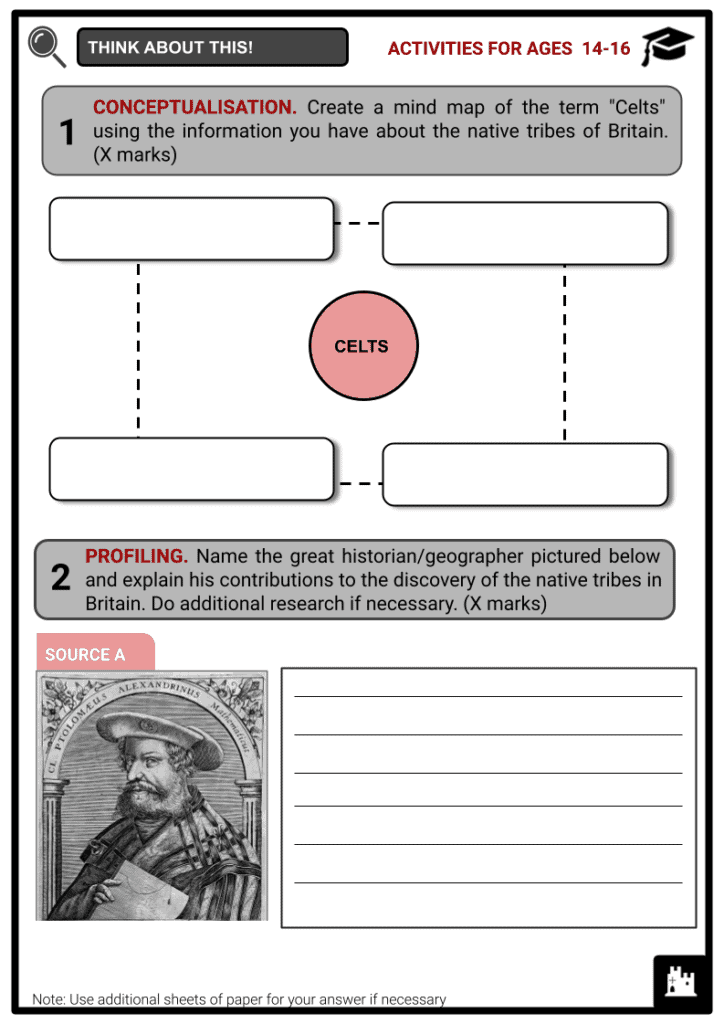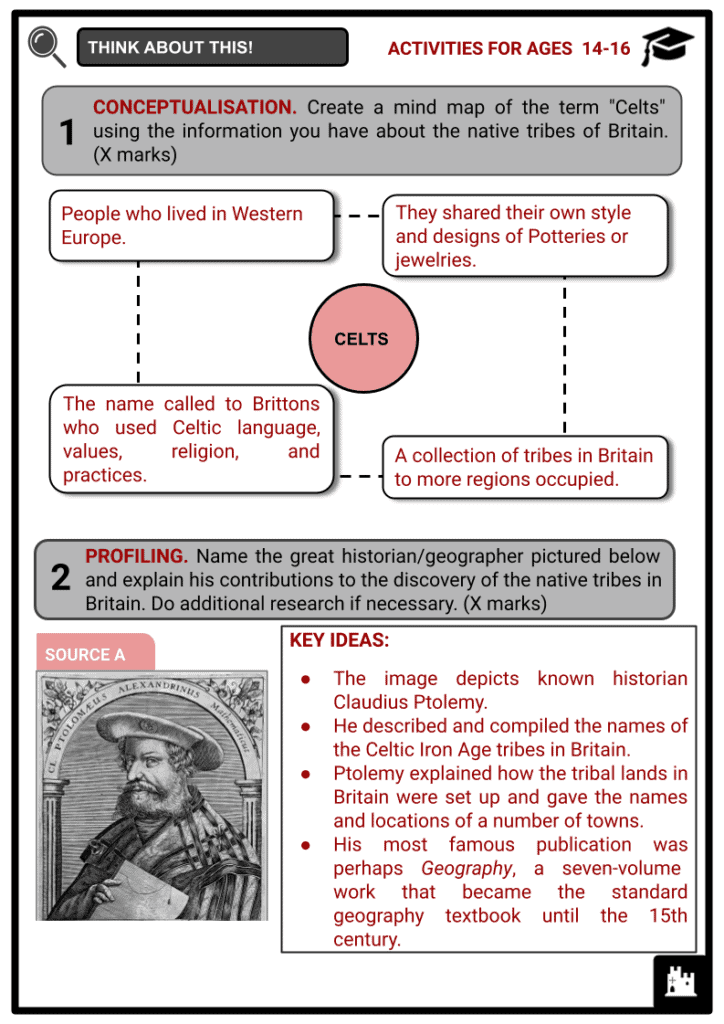Native Tribes of Britain Worksheets
Do you want to save dozens of hours in time? Get your evenings and weekends back? Be able to teach about the Native Tribes of Britain to your students?
Our worksheet bundle includes a fact file and printable worksheets and student activities. Perfect for both the classroom and homeschooling!
Summary
- The Origin of Britain and Its People
- The Movement of Celtic People
- The Beginning of Native Tribes in Britain
- List of Native Tribes in Britain
Key Facts And Information
Let’s find out more about the Native Tribes of Britain!
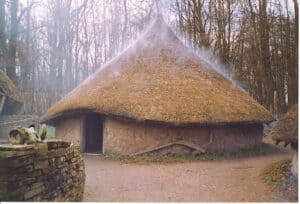
Brittonic language native speakers are referred to as Britons in Celtic studies, from the first evidence of such speech in the pre-Roman Iron Age, through the central Middle Ages. The tribes on the list of Celtic people are listed in the order of their most likely ethnolinguistic ancestry.
Celtic people made up a sizable portion of the population in several areas of Classical antiquity, including Central Asia Minor or Anatolia, the British Isles, Southern Central Europe, and the Balkans. The Native Tribes in Britain list shows where the Celtic language of Britons, and those who joined other regions and formed tribes in Britain, spread and how it is still used today. In this lesson, learners will be acquainted with the events in the Land of Britain.
The Origin of Britain and Its People
- In 1801, the formal name of the nation was changed from United Kingdom to United Kingdom of Great Britain and Northern Ireland to reflect the union of the kingdom on these islands.
- The Celtic people, who speak the Celtic language, established a homeland in Britain as a result of Caesar's Roman soldiers' failed invasion attempt. Hence, many of their cultural practises can be observed in Scotland, Wales, and Ireland today.
- Through migration, Celts colonised western Europe, including Britain, Ireland, France, and Spain. Ireland and Great Britain are islands where remnants of their language and culture are still frequently utilised today.
- The Celts were a group of tribes with roots in central Europe who shared a common language, religious values, customs, and way of life. They thought that the Celtic culture began to change around 1200 BCE.
- In the 7th or 8th century BCE, the occurrence of the Celts was first documented. The Roman Empire, which reigned much of southern Europe, referred to the Celts as "Galli," which means barbarians or tribes who did not possess a position in one great civilisation.
- The Celts, which enunciate with a voiceless velar stop of consonant /k/, were anything but barbarians, and many of their culture and language have remained till date. The Celts ruled most of today's Ireland and Great Britain in the third century BCE on the European continent north of the Alps Mountain range.
The Movement of Celtic People
- As the Roman Empire spread across the European mainland while they sought to rule as much of the world as they could and expand their empire, the Celtic culture was allowed to exist and grow in areas of the western continent's west coast after the Romans launched a military campaign against the Celts at the start of Julius Caesar's reign in the first century BCE, which resulted in millions being executed.
- Roman and Greek historians and geographers, mainly Ptolemy, described and compiled the names of the Celtic Iron Age tribes in Britain. The distribution of Celtic coinage has also provided information about the territorial extents of the various groups that have lived on the island.
- The oldest mention of the ethnic names is from the second century CE. By this time, the Iron Age had officially ended and given way to the Roman era. These tribes may not have been the same ones that inhabited the region throughout the Iron Age. The available evidence suggests that during the Late Iron Age, the tribes of the Middle Iron Age tended to group together to form larger tribal kingdoms.
- The Belgae and Atrebates share their names with tribes in France and Belgium, which, along with Caesar's note that Diviciacus of the Suessiones (King of Belgian nation) had ruled territory in Britain. This shows that this area of the kingdom might have been invaded and ruled from abroad. It has also been proposed that the Parisii were a group of immigrants.
The Beginning of Tribes in Britain
- Some historians believe that the dispersion of several tribes during the Middle Iron Age can be identified by their pottery assemblages, or collections of used found objects used to form a pot. However, most of the tribes apart from in the South didn't use pottery to a substantial enough extent for this methodology to be applied to them.
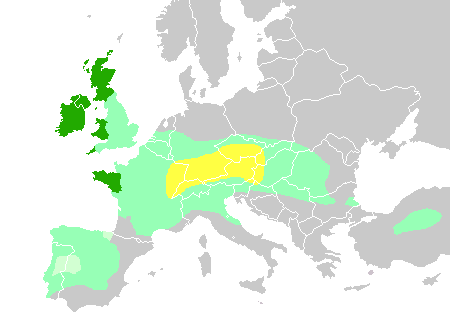
The Celtic People’s Language Distribution Celtic languages in Middle Ages were spoken in measured areas; Celtic languages still widely spoken today in measured areas. - They are also not always the names that the tribes used for themselves. For example, "Durotriges" can mean "hillfort-dwellers," referring to the fact that hillforts were still used in this area even after they were abandoned in other parts of Southern Britain. It is highly unlikely that the Durotriges themselves viewed this quality as being what distinguished them from other tribes.
- The only evidence for the tribes' existence and location comes from Roman writers who visited Britain. The graphic on the right depicts the general location of the major tribes that resided in Britain during Britain’s Roman conquest in the First Century C.E. Tacitus, who had chronicled historical occurrences in Britain, was one of the best observers of the Celtic British tribes.
List of Native Tribes in Britain
- The inhabitants of the north Caledonians, as well as the Scottish Highlands and Islands, went by the moniker, Caledones. Cornovii and Smertae, Caereni, Carnonacae, Creones, and Vacomagi are some of them. The Romans respected the Caledonii for their capacity to withstand hunger, cold, and suffering.
- They were characterised as having huge limbs and red hair by Tacitus. All these tribes led extremely-distinct lives from their neighbours in other regions of Scotland. They inhabited tall stone towers known as Brochs or other fortified locations known as Duns. Fine-metal offerings were a rarity among the Caledones.
- Taexali inhabited what is now Grampian and lived in undefended hamlets and small farms. They cooperated closely with their southern neighbours, the Venicones. Compared to the Highlands and Islands to the west and north, these low-lying and fertile regions of eastern Scotland have varied archaeological evidence for different kinds of settlement and ceremonies.
- The Taexali were beaten by Romans in 84 CE, although they never settled there. They dwelt beyond the Antonine Wall, the northernmost boundary of the Roman Empire, together with the Venicones and Caledones.
- The Carvetii were a tribe that once lived in Cumbria. They established their civitas (a county or other local government) in the Roman Province. Archaeological evidence of the inhabitants of this region before the Roman conquest is extremely scant. These people most likely had substantial hillforts, tiny farms, and little use of currency. The Brigantes were a sizable Kingdom or federation, and the Carvetti may have been a lesser tribe.
- Venicones’ location of is in Tayside. These people were never permanently overthrown and occupied despite the Roman army's numerous campaigns in their land. According to the archaeological evidence, these people and their northern neighbours, the Taexali, shared many traits. Before the Roman era, cemeteries and cremation burials were uncommon in other regions of Britain.
- The Venicones were one of the cultures in northern Britain that buried their dead in stone-lined graves. Additionally, in bogs and lakes, the Venicones and Taexali left offerings that included huge bronze armlets and prestigiously ornamented locally made metal artefacts. These extraordinary pendants, worn one on each arm and weighing up to 1.5 kg a piece, were only worn by the Venicones and Taexali.
- Damnonii refers to the tribe or people who inhabited the region of modern-day Glasgow and Strathclyde in central Scotland. This tribe's name might be alternatively spelled as Dumnonii. At the time of the Roman Conquest, many tribes in Britain and France had a name similar to one another, possibly due to intertribal contact.
- The fact that people chose titles like people of the mountains, people of the horn, brave people, etc. themselves suggests that it might simply be a coincidence. Roman forces defeated the Damnonii and occupied their land for many years before retreating further south to the Hadrian's Wall line.
- Epidii: there is not much known about this enigmatic tribe other than the fact that they likely resided on the islands of Arran, Jura, and Islay, as well as the contemporary province of Kintyre.
- Novantae inhabited today's southwest Scotland. In contrast to the Votandini, the inhabitants of this region did not erect large forts on mountaintops or make numerous offerings of priceless metal objects. Archaeologists have uncovered scant traces of these peoples' pre-Roman existence, much like their southern neighbours Carvetii. They were farmers and herders, yet archaeologists exposed only a smaller portion of their farms and other villages.
- Votadini is an enormous tribe in the southeast of Scotland. Although it is unclear what the exact border was between the Votadini and the other sizable tribe, the Brigantes, likely, constantly due to conflicts and lesser tribes and communities switching allegiances. Unfortunately, the names of the lesser tribes and communities that made up the Votadini, like the Brigantes, are still unknown.
- Selgovae, the name of another Scottish British tribe, is believed to signify hunters. Despite the scant information, the Roman geographer Ptolemy placed them in the Southern Uplands of Scotland. However, it is unclear exactly where these people resided. Eildon Seat may have served as the Selgovae's primary settlement, although it could also have been a Votadinian location.
- Brigantes, like the Votandini, was a substantial tribe of confederation to lesser groups. The term refers to hill dwellers or upland people. Given that the Pennines comprised the geographic centre of their domain, this name is highly fitting. The Brigantes, after the Roman Conquest, were organised into very sizable civitates or administrative units that occupied a majority of Yorkshire, Cleveland, Durham, and Lancashire.
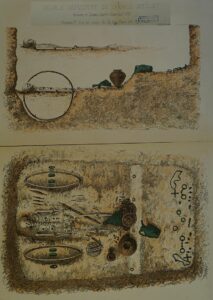
Chariot Burial - Parisi was an East Yorkshire resident. They were a tiny but unique group of people who worked the Yorkshire Wolds' chalk hills for farming. The Parisi was named after the inhabitants of the region of France that is now home to Paris, though it was hotly contested whether these two tribes had close ties. The graves and chariot-burials of the British Parisi are well-recognised.
- It is remarkable how little is known about the Cornovii, given that they were fully within the confines of the Roman province and that their civitas capital, Wroxeter, was one of the biggest in Britain. They are named after a Caledonian tribe that existed in Scotland's far north. The name most likely means horn people. There is no basis for assuming that this group and the group in Caithness are related in any way.
- Deceangli: three primary tribes that resided in the highlands of what is now known as Wales were the Deceangli, Ordovices, and Silures. Wales, England, and Scotland did not, however, exist in prehistory in the same ways they have over the past 1000 years as independent entities.
- Ordovices: majority of the mountains and valleys in what is now mid-Wales were covered by this group. They were the Degeangli's southern neighbours and the Silures' northern neighbours. These people, like the Silures and Degeangli, were farmers who frequently defended themselves from intruders.
- It appears that the sizable tribe of Corieltauvi was only recently formed a short time before the Roman conquest of Britain. It gave the Romans no resistance, therefore it was rapidly transformed into a civitas, an administrative region with Leicester as its seat.
- Inhabitants of what is now primarily the East Midlands were amalgamated by the Corieltauvi (Lincolnshire, Leicestershire, Nottinghamshire, Derbyshire, Northamptonshire). Throughout the East Midlands, you can find coins made by the Corieltauvi people. This group resembles a recent federation that brought together several earlier disparate groups.
- Iceni: before the Roman Conquest, this tribe also produced coinage. Between 200 and 50 BCE, they seem to have been a powerful and affluent confederation of tribes. The Snettisham torcs, the finest hoards of gold artefacts discovered in Iron Age Britain, originate from their territory.
- Other collections of ornately decorated bronze chariot fittings reveal the Iceni nobility's penchant for ostentatious shows. This tribe likewise avoided interactions with the Romans and the modifications they introduced to the way of life that characterised Catuvellauni and Trinovantes at the time.
- Catuvellauni tribe resided in what are now Hertfordshire, Bedfordshire, and southern Cambridgeshire. Additionally, tribes in what is now Buckinghamshire and portions of Oxfordshire were probably part of their domain. The tribe's name may be interpreted as excellent in war. During the reign of Julius Caesar, the Catuvellauni were a tribe, but they soon rose to become a mighty confederation. Tasciovanus, their first recorded king, is well-known for the coins he had his name minted. Around 10 CE., he established a royal and religious centre in Verulamium, the modern city of St. Albans.
- Silures, the Pliny, Ptolemy, and Tacitus are only a few Roman authors who mention this tribe and later civitas or directorial component in a Roman province. The Brecon Beacons and the south Welsh valleys made up their domain in southeast Wales.
- Dubunni is one of the few tribes to produce coinage before the Roman Conquest. This sizable group dwelt in the southern section of the Severn Valley and the Cotswolds. The primary distribution of these coins indicates that the Dubunni inhabited or controlled a region that extended as far south as the Mendips, and the coins also imply that the group was split into northern and southern sections.
- Dumnonii: the South West peninsula and areas of Southern Somerset were both home to the British tribe known as the Dumnonii. There is no proof of a Dumnonian king dynasty, they did not utilise coinage, and they did not have sizable villages to serve as the tribe's political centres. The Dumnonii most likely comprised many smaller tribes that were spread out over a vast area in Cornwall, Devon, and Somerset. The population of Devon and Cornwall lived in modest farmsteads that were typically enclosed by high walls, but there were regional variations in the sorts of settlements and other facets of daily life.
- Demetae were the inhabitants of southwest Wales' lush Pembrokeshire and a sizable portion of Carmarthenshire. They shared many aspects of their lives with their neighbours in Devon and Cornwall, who lived in small farms scattered throughout the countryside across the Bristol Channel. Unlike their more warlike and dispersed neighbours, the Silures and the Ordovices, who lived in the Welsh mountain range, they were cordial toward the Romans and rapidly became accustomed to Roman authority.
- Durotriges: these individuals, who were concentrated in Dorset, were also discovered in southern Wiltshire, southern Somerset, and western Dorset. Before the Roman Conquest, these people produced and used coinage, but there is no proof of a powerful dynasty of kings in the coins or the tombs. One of these smaller tribal groups that inhabited the area of Dorchester interred its dead in inhumation cemeteries.
- The Durotriges still lived in hillforts at this time, which was a distinctive characteristic of them. Although hillforts are one of the most well-known characteristics of the Iron Age, the majority were abandoned at the turn of the first millennium. The most well-known of these Durotrigean hillforts is Maiden Castle in Dorchester; others include South Cadbury Castle and Hod Hill.
- Most likely, the Belgae were not a British tribe. A large collection of tribes in northwest Gaul were given the name Belgae by the Romans, but it is unclear when a civitas bearing this name first appeared in Britain. The domain of the Belgae, according to the Roman geographer Ptolemy, encompassed not only Winchester but also the nearby city of Bath and the unnamed town of Ischalis.
- Atrebates is another pre-Roman French tribe with a name similar to a tribe in Britain. They issued and used coinage, had several ties with France, and were the second-most powerful race in southern Britain during the time of the Roman Conquest. Their initial realm extended from what is now West Sussex, Hampshire, and Berkshire, and they were likely a collection of tribes governed by a single dynasty. The Greek word means settlers or inhabitants from the word Atrebate.
- Regni are not a group of people who were recognised in the era of the Roman Conquest, comparable to the Civitas of the Belgae. Instead, the Romans built this civitas (an organisational entity inside a Roman province), potentially all over a smaller tribal group that was a component of the Atrebates.
- The tribe or people who inhabited north and east Kent were known by the name, Cantiaci. They were particularly receptive to influences from France and the Mediterranean World, like other people in the southeast during the time of the Roman Conquest, and they later joined the vast realm of Cunobelinus. They buried their deceased in line with the cremation practice of northern France, just like the Catuvellauni and Trinovantes. They evolved into a civitas relying on their primary settlement at Canterbury after the Roman Conquest.
- In Caesar's narrative of his invasion in 54 BCE., the Trinovantes were the first British tribe to be named by a Roman author. They appear to have been engaged in a series of conflicts with the tribesmen to the west by this time, who would later unite to form the Catuvellauni dynasty under Tasciovanus. The Catuvellauni and Cantiaci and these people had similar religious beliefs and lifestyles. They ate from plates and sipped from cups, used currency, and burned their deceased. They assimilated into the vast empire created by the Catuvellauni's laws.
Image Sources
- https://upload.wikimedia.org/wikipedia/commons/f/f1/Recreated_Celtic_Village%2C_Museum_of_Welsh_Life._-_geograph.org.uk_-_138611.jpg
- https://upload.wikimedia.org/wikipedia/commons/1/1f/Celts_in_Europe.png
- https://upload.wikimedia.org/wikipedia/commons/thumb/4/4f/Sepulture_double_C00077.jpg/800px-Sepulture_double_C00077.jpg

